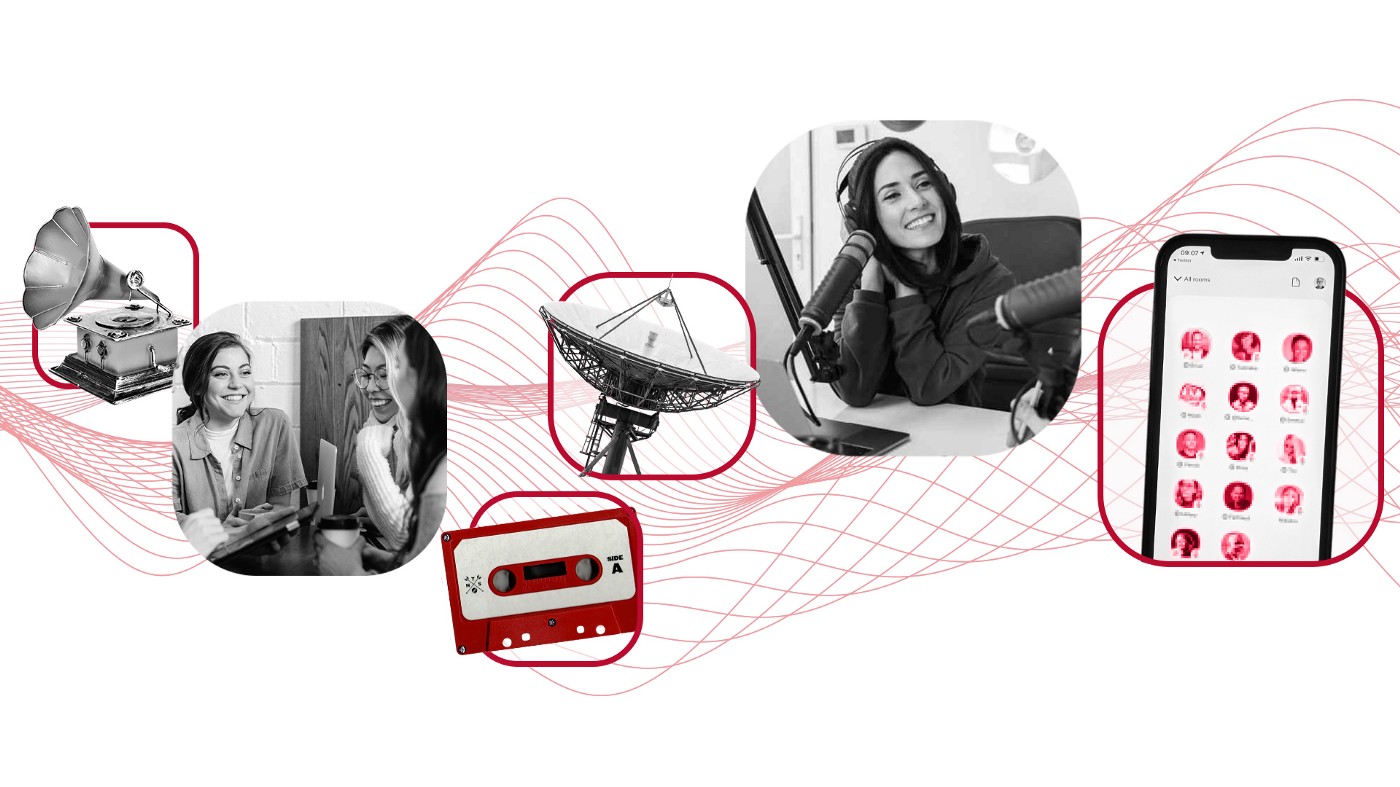
Audio: Standing the test of time from radio to Clubhouse
Why the age-old method of storytelling will never go out of style.
Public relations is the management of reputation through storytelling and people connecting with people. Storytelling is powerful, regardless of the platform or medium used in the telling. But storytelling through audio further elevates the effectiveness of the story in achieving its objective of forging connections — be it B2B or B2C, or for a brand, a corporate, or an individual.
The return of audio
Audio has stood the test of time as a key tool and medium crucial to storytelling. In the very early days, town criers, priests in temples and churches, and even our ancestors passed down their legacies and wisdom through storytelling. Meanwhile, formal attempts to record audio can be traced back to the 1800s, facilitated by the Industrial Revolution using mechanical devices such as the phonograph and the first telephone.
In a public relations context, radio has long been one of the most popular and effective audio technologies used by public relations professionals. Queen Elizabeth, for example, chose to give radio broadcasts on special occasions and continues to even today. But over the years, the invention of other communications technologies, such as television and — more widely — the internet, have affected the popularity of radio and audio formats. I clearly remember the decline of radio as a communications channel, especially in technologically advanced countries such as Singapore. It just wasn’t cool.
Surprisingly, in more recent times, radio has been resurgent and regained its favour with the public, and in turn with the public relations industry. In fact, radio has been combined with new and emerging technologies to enhance its appeal and access. Today’s podcasts and Clubhouse are essentially more exciting versions of radio and ye olde town criers. Facebook is the latest to jump on the bandwagon with the launch of Live Audio Rooms on Facebook and Messenger just last week.
Why audio is such a powerful communications tool
Audio communications has constantly evolved with technological advancements, and so has its audience.
Ramakrishnan CN, partner at Entropia and head of EXR, claims that what we’re seeing today is the rise of ‘active audio’. He defines ‘active audio’ as “how actively people are engaged with the content” they are listening to. He further categorises different types of audio engagement as “active listening (radio news), passive listening (music stations), semi-active on-demand (Spotify or podcasts) and now active audio experience (live audio)”.
As both audio technology and audiences change, the public relations industry has used each iteration to maximise communication efforts. There are many reasons why audio remains a powerful communications tool over each evolution, with these being the main 5:
1. Audio humanises communications. It allows us to actually hear the person or brand, which enables us to form a relationship in a real way. It makes us want to hear that voice, to trust it, and to believe it.
If this resonates with you and you would prefer to hear me talk about this subject instead, here’s my session in the PRCA SEA discussion on ‘Tech Trends that are transforming PR and Communications’.
2. Radio, podcasts, Clubhouse literally bring your voice right into our homes, on the road as you drive, or when you drag yourself out for that lockdown run. These audio channels make it extremely easy for listeners to consume information.
3. Audio is easy to access. It does not require expensive equipment or high literacy. Simple radios can be found in most rural areas and do not need complex connections to work; and a person does not know how to read to understand audio.
A large population, especially in Asia, have access to mobile phones and basic internet allowing them to access online audios — maybe not Clubhouse but certainly YouTube or Instagram or even digital radios that have been developed to cater specifically to such demographics. This exponentially increases the reach of audio to a wide range of listeners.
4. Audio cuts through video and screen fatigue. There has been an explosion of video content over the past 5 years or so. COVID-19 and the resulting remote work and lockdowns have contributed to even more video content.
Audio is then a welcome change to the ubiquity of video and the constant staring at screens. From a content creator’s perspective, it also takes away the pressures of being in front of the camera — something not everyone is comfortable with.
5. Audio appeals to our want to do things with the least effort. Why read a book when we can listen to it being narrated? Why watch an interview when we can listen to it while doing something else?
We always strive for the easier ways to do things and this extends to communications as well. We would rather listen than read; listening instead of reading or concentrating on the accompanying video means less work for us. This further lends to the appeal of audio as a communications tool.
The last point on the list touches on the different types of engagements made possible by audio — important to consider when contemplating the adoption of audio as part of a communications strategy.
Audio, here to stay
I believe audio will remain a powerful communication technology for years to come. New audio platforms may emerge as technology evolves, but the genesis of audio and its role in communication will remain as important as it has all these years. Our lives are only getting busier each day and we have limited time to engage with content. It only helps when that content is easy to access, doesn’t require additional screen time to consume and is delivered through a (hopefully lovely) voice in our homes.
Another key reason fuelling the popularity of audio is its increasing appeal for more B2B conversations. The formality associated with B2B communications has been reducing over the years. There have been conscious efforts to make industry leaders and opinion leaders more approachable — breaking barriers which have in the past made them seem at arms’ length for both internal and external audiences.
This thinking has evolved considerably and has been increasingly adopted. Townhalls, webinars, newsletters and other platforms have been used to carry the voice of the leadership / top management to people, emphasising and showcasing their humanity. Audio, for many of the reasons listed above, has been instrumental in this endeavour. The surging popularity of Clubhouse for B2B conversations, being used by the likes of Bill Gates and Elon Musk, is proof that audio remains relevant even in the changing business world.
As with any communications tool, we do need to access the relevancy of audio in regards to the audience we need to reach and the communications objective to be achieved. Audio has many benefits and it is up to us to make the most of it.
